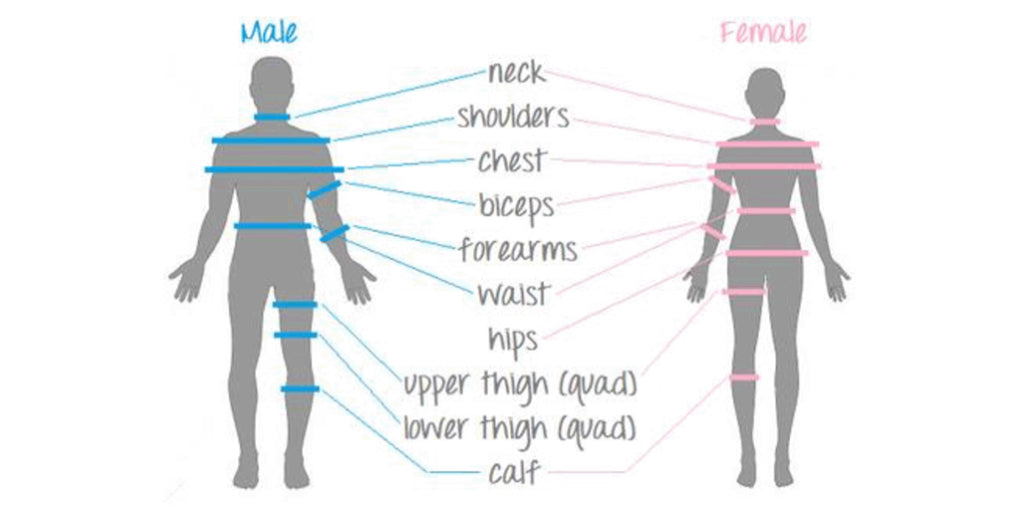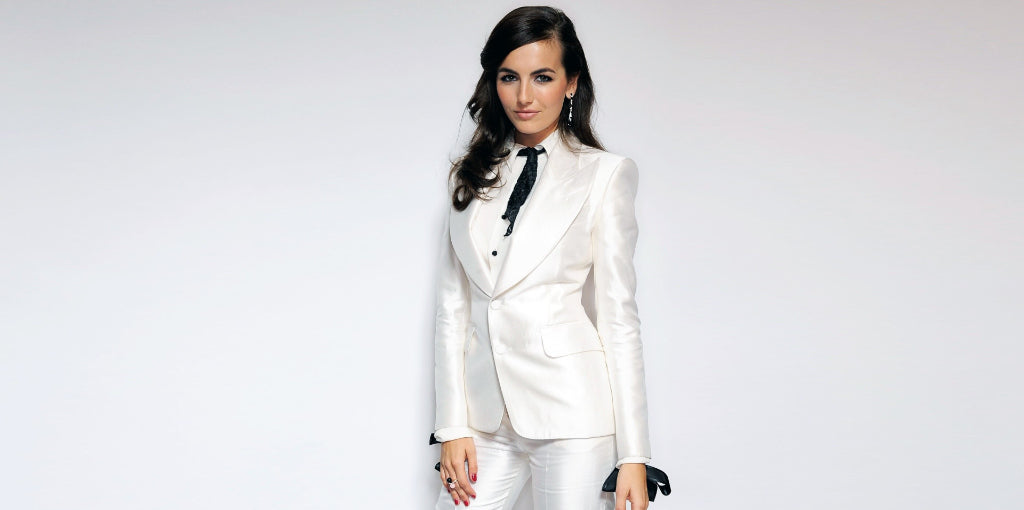How To Measure Your Size For Clothing
Table of Contents
Ensuring a perfect fit when shopping for clothing is paramount. Yet, achieving this online can feel like navigating a labyrinth. Fear not! Our blog is here to demystify the process and empower you to measure yourself accurately, guaranteeing that perfect fit every time.
Where to Take Measurements
Before diving in, let's gather your essentials: a soft tape measure and a friend (optional, but helpful for those hard-to-reach spots!). Now, let's locate the key areas to measure:
- Bust/Chest: Wrap the tape measure around the fullest part of your bust/chest (applicable to both men and women). Keep it level and snug, but not constricting.
- Waist: Find your natural waistline – the slimmest part of your torso, usually where you wear your pants. Measure comfortably around this area.
- Hips: Locate the fullest part of your hips and buttocks. Wrap the tape measure around this area, keeping it parallel to the floor.
- Inseam (Optional, for pants): This measurement is helpful for bottoms. Measure from the top of your inner thigh seam down to your ankle bone.

Tips for Taking Your Measurements
For the most accurate results, follow these simple steps:
- Stand Tall: Maintain good posture with your shoulders relaxed and feet hip-width apart.
- Less is More: Wear minimal clothing or form-fitting garments that won't interfere with the tape measure.
- The Snug Fit: Keep the tape measure snug but not tight.
- Double Check: Take each measurement twice for accuracy. If the measurements differ slightly, take the average.
Bust/Chest Fit and Ease Chart
Finding the perfect fit in clothing comes down to understanding the concept of "ease." Ease refers to the difference between your actual body measurement and the garment's corresponding measurement. Here's a breakdown of different ease allowances and their impact on the fit, specifically focusing on the bust/chest area:
| Fit | Ease Allowance | Description | Clothes |
| Very Close-Fitting | Negative Ease | This fit is designed to hug your curves closely, with the garment measurement being 2" to 4" (5 to 10cm) smaller than your actual bust/chest measurement. |
Ideal for garments like shapewear or some formal wear that require a sleek silhouette.
|
| Close-Fitting | Zero Ease | This fit skims your body comfortably, with the garment measurement matching your actual bust/chest measurement. |
This is a classic choice for tailored shirts and blouses.
|
| Classic Fit | Low Positive Ease | This fit offers a touch of wiggle room for ease of movement. The garment measurement is approximately 2" to 4" (5 to 10cm) larger than your actual bust/chest measurement. |
It is a comfortable fit for everyday wear.
|
| Relaxed Fit | Moderate Positive Ease | This fit prioritizes comfort with a looser silhouette. The garment measurement is approximately 4" to 6" (10 to 15cm) larger than your actual bust/chest measurement, allowing for plenty of airflow and movement. |
Perfect for casual wear and loungewear.
|
| Oversized Fit | High Positive Ease | This fit offers ultimate comfort and a slouchy look. The garment measurement is significantly larger than your actual bust/chest measurement, typically 6+" (15+cm) more. |
Ideal for oversized sweaters or statement pieces.
|
Different Clothes, Different Needs
Clothing serves a multitude of purposes, from formal attire to casual wear and everything in between. Each type of garment has a unique role to play in shaping our appearance, enhancing our comfort, and reflecting our style. Understanding the different fit requirements for various clothing categories is crucial for achieving both style and comfort.
Formal Wear: When it comes to formal occasions, a polished and sophisticated appearance is paramount. Formal wear, such as suits, dresses, and business attire, typically adheres to a close-fitting style. This means the garments should hug the body's contours without being overly constricting, creating a streamlined and professional look.

Loungewear: Loungewear is all about prioritizing comfort and relaxation, offering cozy sweaters, soft sweatpants, and comfy sweatshirts for unwinding at home. While a slightly relaxed fit with low positive ease is ideal, balance is key. Too loose-fitting loungewear can restrict movement, so a slightly tailored fit allows for comfort without sacrificing freedom.
Sleepwear: When it comes to sleepwear, comfort and breathability are paramount. Specially, Silk is a natural fiber known for its exceptional breathability and smooth texture. Silk pajamas epitomize luxury and comfort, with their soft, breathable fabric. Opt for a relaxed fit with moderate positive ease for maximum comfort throughout the night. And it also ensures that the pajamas won't bunch up or cling to your skin, providing a smooth and uninterrupted sleep experience.
Activewear: Activewear, designed for workouts and physical activities, demands a balance between comfort and performance. The fit should allow for unrestricted movement and breathability while still providing some support and coverage. Look for garments made from moisture-wicking fabrics that stretch and move with you. A slightly relaxed fit with moderate ease is ideal for activewear, ensuring both comfort and performance.
Everyday Wear: Everyday wear encompasses various clothing styles, from casual jeans and T-shirts to versatile dresses and skirts. The key to achieving a stylish and comfortable everyday look lies in choosing garments that flatter your body type and fit well without being too tight or too loose. A classic fit with low positive ease is a great starting point for everyday wear, providing a balance between comfort and style.
When Sizes Collide: Choosing the Perfect Fit
Formal Wear: Size down and have it tailored for a polished look.
Loungewear: Size up for maximum comfort and relaxation.
Sleepwear: Always size up for a comfortable and peaceful night's sleep.
Activewear: Choose the smaller size for a fitted workout fit, or the larger size for more flexibility.
Everyday Wear: Choose the smaller size for a tailored look, or the larger size for a casual fit.
FAQs about Size Guide
Q1: What if my measurements fall between sizes?
A1: If your measurements fall between sizes, it's best to refer to the brand's size chart and consider the fit of the garment. If you're unsure whether to size up or down, opt for the larger size for a more comfortable fit, especially if the item is form-fitting or lacks stretch.
Q2: How do I know if I'm measuring my waist/hips correctly?
A2: To measure your waist accurately, wrap the tape measure around your natural waistline, typically located above your belly button and below your rib cage. For hips, measure around the fullest part of your hips and buttocks. Ensure the tape measure is parallel to the ground for precise measurements.
Q3: What if I don't have a measuring tape? How can I measure my size accurately?
A3: If you don't have a measuring tape, don't worry! You can still measure your size accurately using a piece of string or ribbon. Wrap the string around the area you wish to measure, ensuring it fits snugly but not too tight. Mark the spot where the string meets and then measure the length using a ruler or a straight object with marked increments. This method ensures consistency and precise measurements, even without a measuring tape.
Q4: Can I determine my clothing size based on my height alone?
A4: While height can provide a rough estimate of clothing size, it's not always accurate. Factors such as body shape and proportions also play a significant role. It's best to refer to the brand's size chart and take accurate measurements of your bust, waist, and hips for a more precise fit.
Q5: How do I know if a garment will fit well without trying it on?
A5: To gauge whether a garment will fit well, carefully review the brand's size chart and consider your measurements. Look for specific details such as fabric composition, stretch, and reviews from other customers. Additionally, consider the garment's silhouette and whether it's intended to be form-fitting or relaxed. If unsure, opt for styles with adjustable features like drawstrings or elastic waistbands for added flexibility.
Conclusion
Finding the perfect fit for your clothing is essential for both comfort and confidence. This guide has provided you with valuable tips and insights to ensure that you measure yourself accurately and choose the right size for your needs. With these tips in mind, you can now shop for clothing with confidence, knowing that you'll find the perfect fit every time. Happy shopping!

































